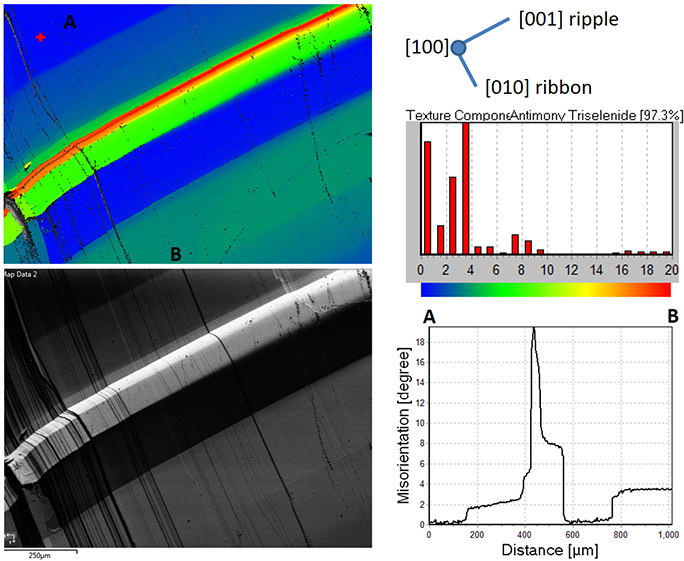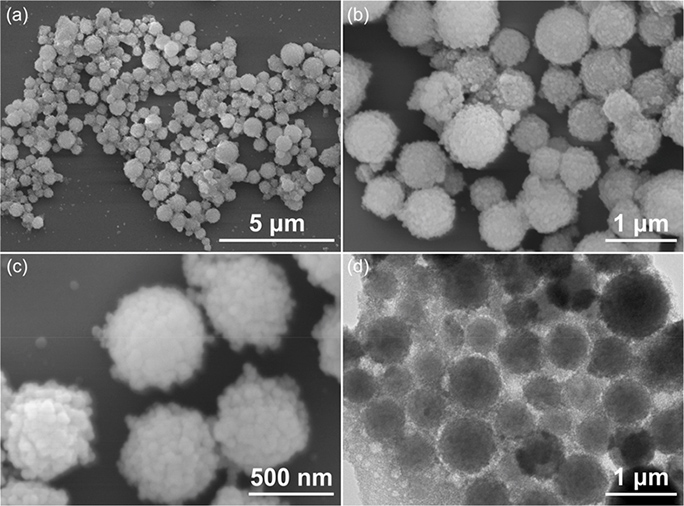Harnessing solar energy
Current commercial photovoltaic cells (PVs) for solar panels are made of silicon, obtained through large scale extraction from quartz in sand grains. This extraction process is costly and a silicon solar cell can convert only ~22% of solar energy into electricity. There is therefore a strong need for new materials discoveries to develop higher efficiencies as well as economic PVs.
Multi-junction solar cells can achieve high energy conversion efficiencies because they are made of multiple layers of different crystals, able to absorb different parts of the solar spectrum. In collaboration with the Stephenson Institute for Renewable Energy (SIRE) and the Engineering and Physical Sciences Research Council (EPSRC), we apply EBSD, EDS, FIB and S/TEM to study the crystal and defect structure of promising solar cell materials such as antimony triselenide (Sb2Se3) and gallium arsenide/antimony nitride alloys (GaAsSbN).

Image: Crystal orientation of antimony selenide measured by EBSD
Tunable Chemistry for Energy Storage
Phase Change Materials (PCMs) offer the ability to store latent heat, and provide environmental and sustainability solutions in modern energy storage challenges. In collaboration with the Shchukin Group within the Department of Chemistry, the stability and activity of PCMs are being enhanced by nanoencapsulation which creates core-shell structures that aim to increase the overall energy storage capability.
Here, we demonstrate the encapsulation of salt hydrate PCMs into a 500 – 600 nm silica shell for thermal energy storage. PCMs store heat as they melt and then release it upon freezing. Nanocapsules created here are stable over 500+ cycles of melting and freezing, showing minimal heat storage capacity loss, a record for inorganic PCMs.

Nanoencapsulation and Surface Chemistry
Back to: Scanning Electron Microscopy Shared Research Facility (SEM SRF)